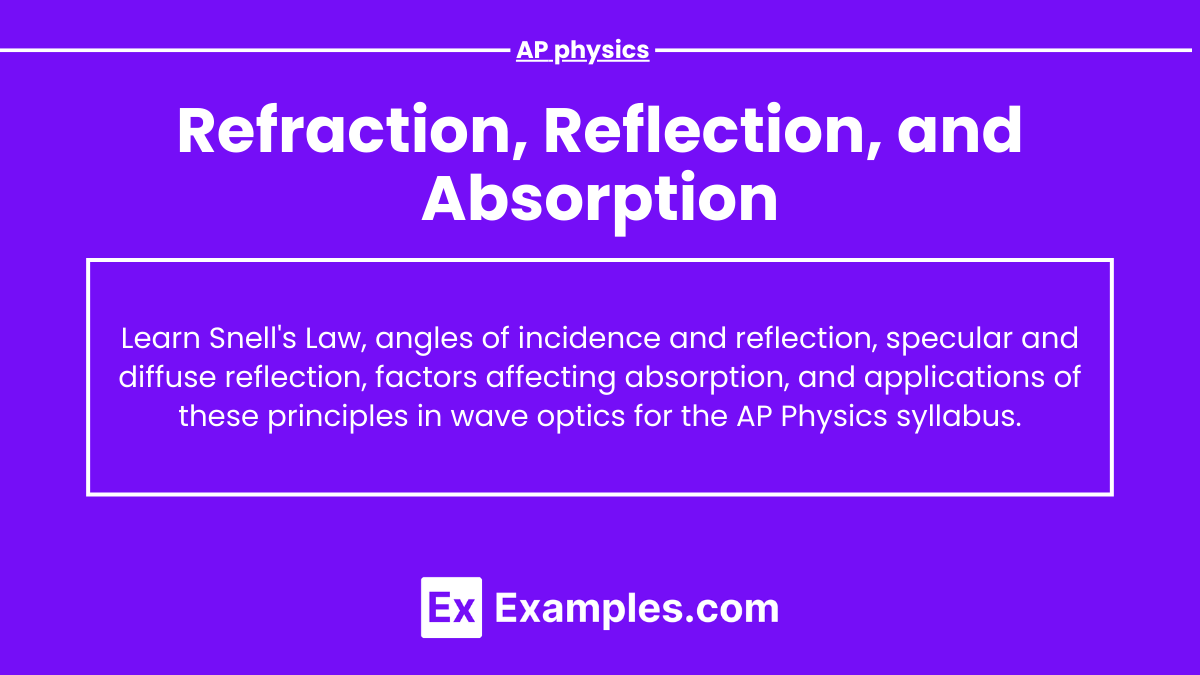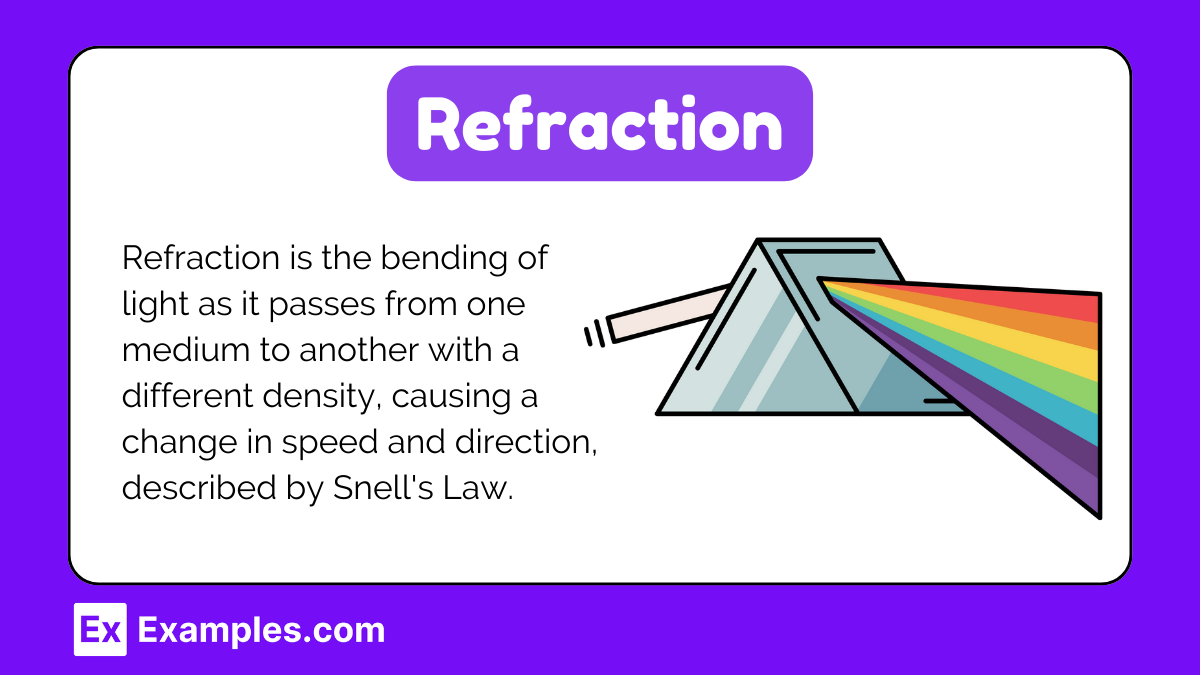Learn refraction, reflection, and absorption is essential. Refraction involves light bending when passing between different media, governed by Snell's Law. Reflection describes light bouncing off surfaces, following the law of equal angles. Absorption occurs when materials convert light energy into other forms, typically heat. Mastering these concepts is crucial for the AP Physics exam, as they form the basis for comprehending wave optics and light interactions in various environments.
Free AP Physics 2: Algebra-Based Practice Test
Learning Objectives
Understand refraction, reflection, and absorption, you should learn to explain and apply Snell's Law for refraction, understand the behavior of light at boundaries between different media, and describe the laws of reflection. Additionally, grasp the principles behind diffuse and specular reflection, analyze the factors affecting light absorption in materials, and solve related problems. This foundational understanding is critical for mastering wave optics and light behavior in various media.
Refraction
Refraction is the bending of light as it passes from one medium to another with a different density. This change in speed causes the light to change direction.
Snell's Law
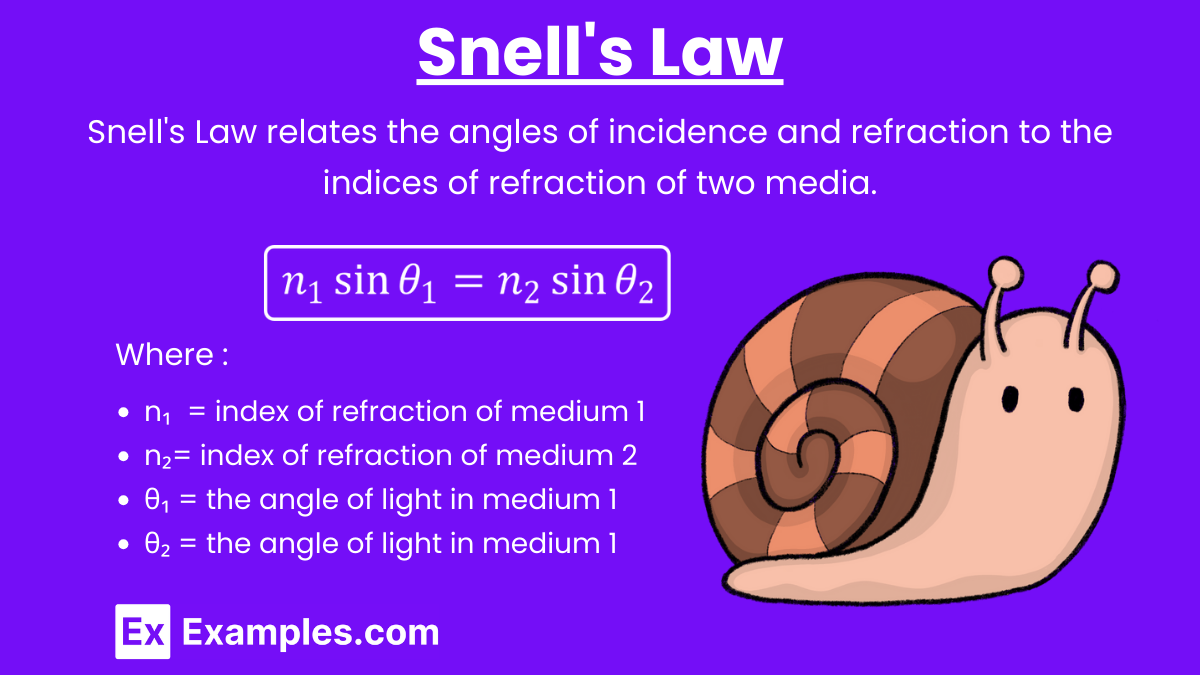
The relationship between the angles of incidence and refraction and the indices of refraction of the two media is given by Snell's Law:
n₁sin(θ₁)=n₂sin(θ₂)
Where:
n₁ and n₂ are the indices of refraction of the two media.
θ₁ is the angle of incidence.
θ₂ is the angle of refraction.
Index of Refraction
The index of refraction (n) of a medium is the ratio of the speed of light in a vacuum to the speed of light in that medium:
n=c/v
Where:
c is the speed of light in a vacuum (3×10⁸ m/s).
v is the speed of light in the medium.
Examples of Refraction
Glass Prism: Light entering a glass prism bends and disperses into a spectrum of colors.
Water Pool: Objects appear bent or shifted when viewed at an angle under water.
Important Points
Light slows down and bends towards the normal when entering a denser medium (higher index of refraction).
Light speeds up and bends away from the normal when entering a less dense medium (lower index of refraction).
Reflection
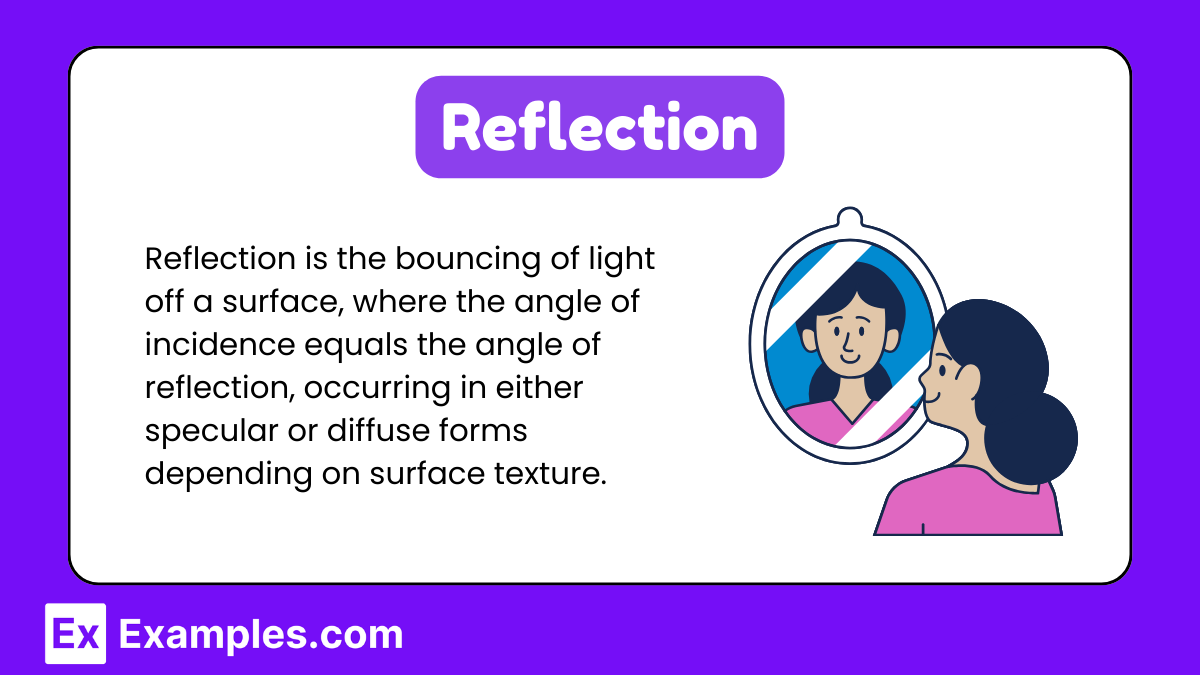
Reflection occurs when light bounces off a surface and changes direction without changing its medium.
Laws of Reflection
The angle of incidence (θi) is equal to the angle of reflection (θr).
The incident ray, the reflected ray, and the normal to the surface all lie in the same plane.
Types of Reflection
Specular Reflection: Reflection from a smooth surface, where parallel light rays reflect at the same angle, producing a clear image (e.g., a mirror).
Diffuse Reflection: Reflection from a rough surface, where light rays scatter in many directions, producing a blurry image or no image (e.g., paper).
Examples of Reflection
Mirrors: Light reflects off a mirror at the same angle it arrives, creating a clear image.
Lakes: Calm water surfaces reflect images of objects around them.
Absorption
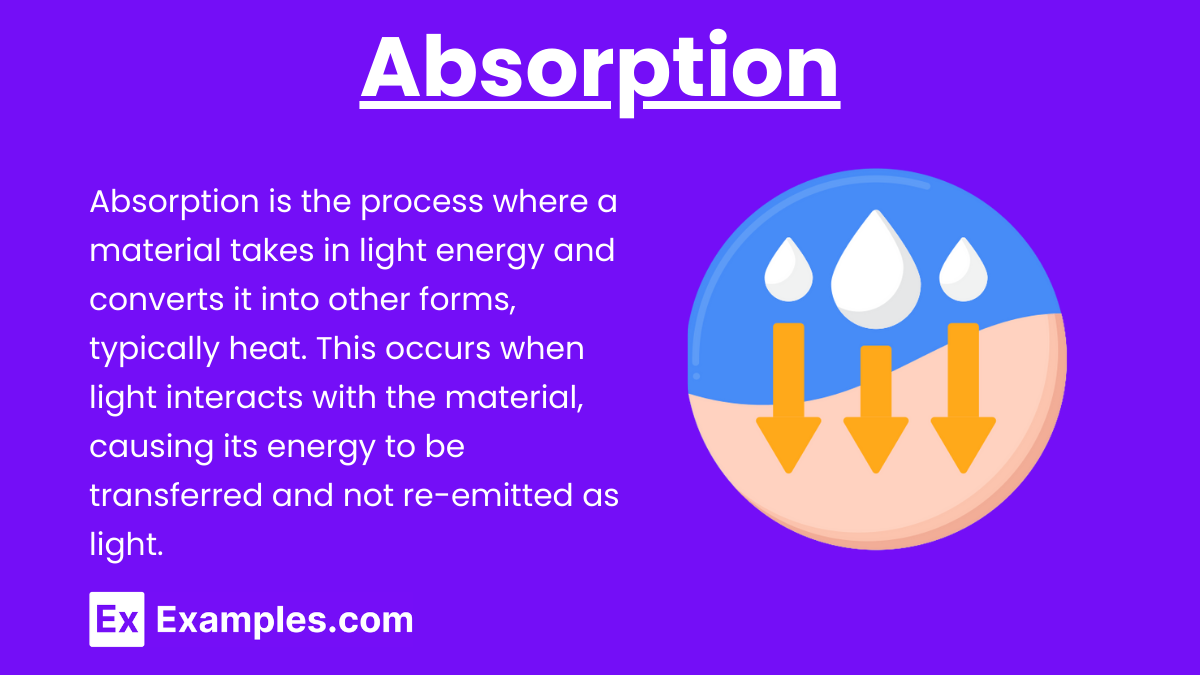
Absorption is the process by which a material takes in light energy and converts it into other forms of energy, typically heat.
Factors Affecting Absorption
Material Properties: Different materials absorb light differently based on their composition and color.
Wavelength of Light: Materials absorb different wavelengths to varying extents (e.g., black surfaces absorb most wavelengths, appearing black).
Surface Texture: Rough surfaces absorb more light due to multiple reflections and increased interaction with the material.
Examples of Absorption
Black Surfaces: Absorb most of the light energy and convert it to heat, appearing black.
Solar Panels: Absorb sunlight and convert it into electrical energy.
Important Points
Absorbed light does not re-emerge from the material; it is converted to other forms of energy.
The efficiency of absorption can be influenced by the angle of incidence and the nature of the material's surface.
Examples of Refraction, Reflection, and Absorption
Refraction
Glass Prism: Light entering a prism bends and disperses into a spectrum of colors.
Eyeglasses: Correct vision by bending light rays to focus properly on the retina.
Reflection
Mirrors: Reflect light to create clear images.
Calm Water Surface: Reflects images of objects and sky above.
Absorption
Solar Panels: Absorb sunlight and convert it into electrical energy.
Practice Test Questions on Refraction, Reflection, and Absorption
Question 1
When light passes from air into water, it bends towards the normal. This phenomenon is called: A) Reflection
B) Absorption
C) Refraction
D) Diffuse reflection
Answer: C) Refraction
Explanation: Refraction is the bending of light as it passes from one medium to another with a different density. When light enters water from air, it slows down and bends towards the normal due to the higher refractive index of water.
Question 2
Which law states that the angle of incidence is equal to the angle of reflection? A) Snell's Law
B) Law of Refraction
C) Law of Reflection
D) Law of Absorption
Answer: C) Law of Reflection
Explanation: The Law of Reflection states that the angle of incidence (θi\theta_iθi) is equal to the angle of reflection (θr\theta_rθr). This applies to smooth surfaces where specular reflection occurs.
Question 3
Which of the following is an example of absorption of light? A) Light passing through a glass window
B) Light reflecting off a mirror
C) Light being converted to heat in a black surface
D) Light bending in a prism
Answer: C) Light being converted to heat in a black surface
Explanation: Absorption occurs when light energy is taken in by a material and converted into other forms of energy, typically heat. A black surface absorbs most of the light energy that falls on it and converts it into heat, causing the surface to warm up.

